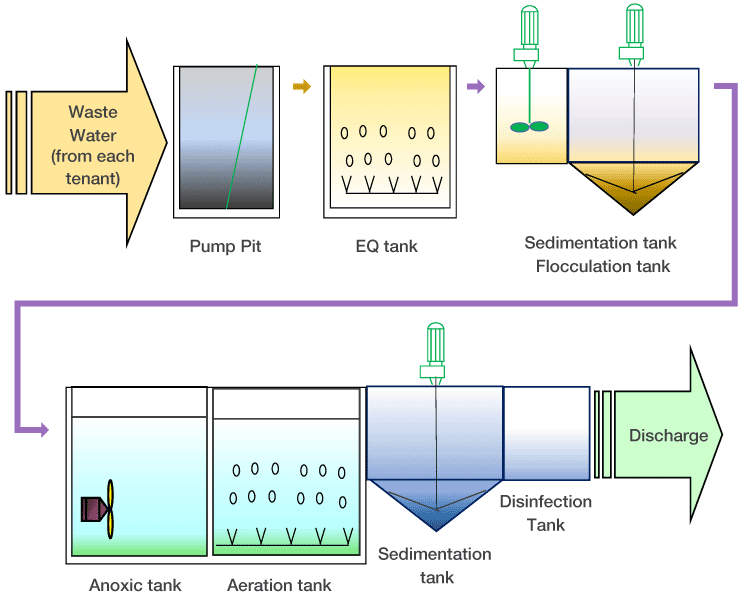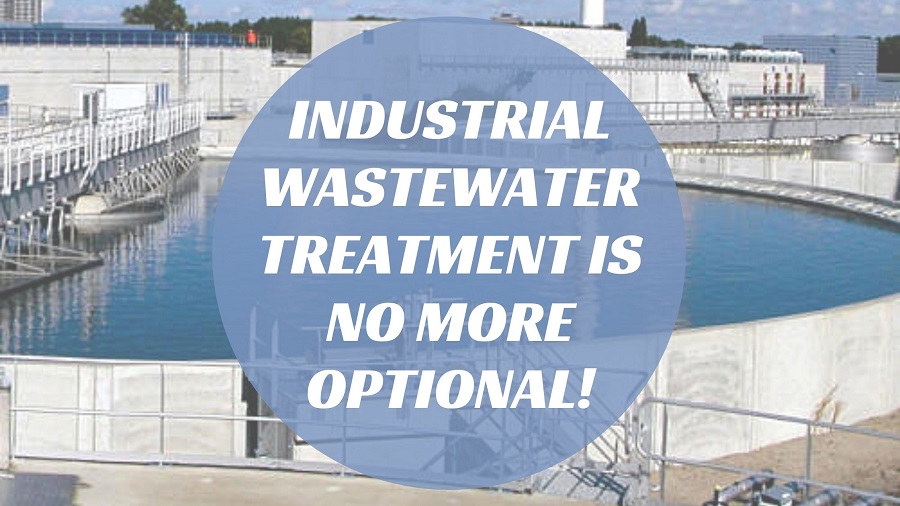Obstacles and Solutions in Industrial Waste Water Therapy
The therapy of commercial wastewater presents a multifaceted variety of obstacles, ranging from stringent regulative conformity to the details of price management and technological restrictions. The irregularity in waste make-up further complicates the effectiveness of conventional therapy techniques, often resulting in escalated operational expenditures. Nonetheless, emerging services such as advanced oxidation procedures and ingenious funding designs show promise in attending to these issues. As sectors grapple with the need for lasting techniques, the inquiry stays: what methods will eventually lead to a balance in between conformity, cost-efficiency, and ecological obligation?
Regulatory Conformity Challenges
Exactly how can commercial facilities browse the complicated landscape of regulatory conformity in wastewater treatment? The regulatory framework governing wastewater monitoring is multifaceted, often differing by jurisdiction and sort of industry. Facilities needs to stick to federal, state, and neighborhood policies that determine effluent top quality criteria, discharge limitations, and monitoring demands. Failing to conform can cause severe fines, consisting of penalties and operational closures.
To efficiently handle these conformity challenges, facilities need to implement robust tracking and reporting systems that guarantee real-time information collection and analysis. Routine audits and danger analyses can identify potential compliance voids, enabling for aggressive changes in treatment processes. Worker training programs concentrating on governing knowledge and ideal practices are necessary to cultivate a society of compliance within the company.
Furthermore, involving with regulatory firms can provide useful understandings and clear up ambiguous guidelines. Facilities might also gain from consulting with environmental professionals that specialize in wastewater treatment conformity, ensuring that they remain informed of evolving laws. By embracing these techniques, commercial centers can not only meet compliance needs yet also improve their functional performance and environmental stewardship.
Expense and Financial Obstacles
Browsing regulatory compliance in wastewater therapy often presents considerable monetary obstacles for industrial facilities. The expenses connected with implementing required treatment innovations, maintaining conformity with rigorous laws, and managing operational expenses can be daunting. Many companies encounter high initial capital investment for the construction or upgrading of wastewater therapy plants, which might strain budget plans, particularly for medium-sized and little business.
Additionally, continuous operational costs, including chemical, labor, and maintenance inputs, add to the financial burden. The changability of rising and fall power rates and the prospective requirement for additional investments to meet evolving regulations aggravate these financial pressures. Oftentimes, the lack of financial motivations or assistance from government bodies makes it even extra difficult for companies to justify investments in innovative treatment systems.
In addition, the financial practicality of wastewater treatment services is typically questioned, specifically for markets with tight revenue margins. It is important for industrial facilities to discover affordable approaches, such as adopting innovative financing alternatives, engaging in collaborations, and leveraging arising technologies that can assist mitigate these financial obstacles while guaranteeing conformity with ecological standards.

Technological Limitations
Many technical constraints impede the effectiveness of commercial wastewater therapy processes. One substantial challenge is the insufficiency of existing treatment modern technologies to deal with complex contaminants.
Furthermore, the scalability of therapy technologies poses a challenge. While some sophisticated approaches, like membrane filtering or advanced oxidation, show guarantee in regulated environments, their application on a bigger scale can be excessively pricey and practically challenging. Upkeep and operational complexities additionally make complex the fostering of these systems, especially for smaller sized sectors with minimal technical know-how.
The integration of real-time monitoring innovations likewise continues to be inadequate in visit this site right here lots of therapy centers. Without reliable monitoring systems, operators can not sufficiently analyze therapy performance or detect potential failures, resulting in inconsistent effluent quality. As a result, attending to these technical constraints via r & d, along with financial investment in cutting-edge remedies, is critical for improving the effectiveness of industrial wastewater treatment and guaranteeing regulatory compliance. Industrial Waste Water Treatment.
Irregularity in Waste Structure
In the realm of industrial wastewater therapy, the variability in waste structure offers a powerful challenge. Industries create wastewater with varied qualities, influenced by variables such as manufacturing procedures, resources, and functional methods. This heterogeneity makes complex the treatment procedure, as traditional systems usually battle to successfully address the wide variety of pollutants existing.
As an example, wastewater from food handling might have high levels of natural matter, while effluents from chemical production could consist of heavy steels and dangerous materials. This variation demands adaptable therapy approaches to ensure compliance with environmental regulations and secure public health. Furthermore, fluctuations in waste make-up can occur with time, affected by modifications in manufacturing routines, upkeep activities, or the intro of brand-new products.

Innovative Therapy Solutions
Innovative treatment solutions are essential for attending to the complexities of industrial wastewater monitoring. Standard techniques usually fall short in properly removing a large array of contaminants, especially in facilities with varied effluent streams. Current developments focus on incorporating cutting-edge technologies to improve therapy performance and sustainability.
One appealing strategy is making use of advanced oxidation processes (AOPs), which take advantage of effective oxidants to weaken organic toxins. AOPs, consisting of photocatalysis and ozonation, can dramatically reduce toxic substances and enhance effluent high quality. Furthermore, membrane layer bioreactor (MBR) modern technology has actually obtained traction, integrating biological treatment with membrane filtering, leading to top notch effluent and lowered impact.
An additional innovative remedy is the implementation of source recuperation systems. Methods like anaerobic food digestion not just treat wastewater however likewise produce biogas, which can be utilized as a sustainable he said energy source. Furthermore, the fostering of expert system and artificial intelligence models can optimize therapy procedures by anticipating variations in wastewater make-up, therefore improving functional performance.
These ingenious solutions not just address regulative compliance yet likewise promote ecological sustainability, paving the means for a much more resilient and reliable commercial community.
Conclusion
In final thought, resolving the challenges of industrial wastewater treatment needs a diverse technique that incorporates governing conformity, price monitoring, and technological improvements. A dedication to continual improvement in therapy techniques will inevitably add to the reliable monitoring of commercial wastewater and environmental security.
The treatment of industrial wastewater presents a multifaceted array of challenges, ranging from rigorous governing conformity to the intricacies of price monitoring and technical restrictions. Industrial Waste Water Treatment.Navigating regulatory compliance in wastewater therapy usually offers substantial economic difficulties for industrial facilities. Resolving these technical restrictions through research and growth, together with investment in ingenious solutions, is critical for boosting the efficacy of commercial wastewater treatment and ensuring regulative conformity
Wastewater therapy facilities must invest in robust surveillance systems and versatile treatment modern technologies capable of accommodating differing influent qualities.In conclusion, resolving the challenges of commercial wastewater treatment calls for a diverse approach that incorporates regulatory conformity, cost monitoring, and technical advancements.